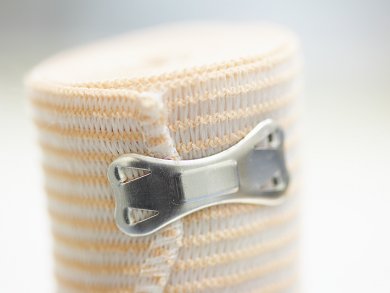Uncontrolled bleeding is the leading cause of death in military trauma and a significant cause of civilian mortality. Traditional pressure-based methods for bleeding control — tourniquets, compressive bandages, and ligation — are not suitable when compression is impractical. New hemostatic dressings are being developed that function by enhancing clotting.
Paula Hammond and co-workers, Massachusetts Institute of Technology, USA, have used the hydrogen bonding interactions between the clotting factor, thrombin, and tannic acid, to build films containing large thrombin loadings. The films were applied to a clinically available porous and absorbent gelatin sponge to demonstrate their practical applicability. The sponges promoted rapid hemostasis in a porcine spleen injury model while preserving the sponge absorption capabilities.
The films were assembled through a layer-by-layer technique and are the first example of multilayer coatings based on H-bonding that do not use any synthetic polymers. This allows the thrombin density in the films to be maximized.
Tannic acid, a component of black tea, and the bovine thrombin used in these films, are already approved by the Food and Drug Administration (FDA), facilitating the films’ eventual clinical translation.
- Hemostatic Multilayer Coatings,
A. Shukla, J. C. Fang, S. Puranam, F. R. Jensen, P. T. Hammond,
Adv. Mater. 2012.
DOI: 10.1002/adma.201103794


